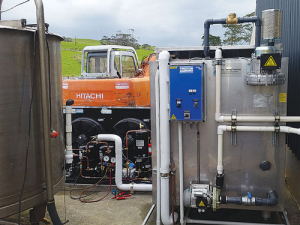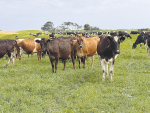Farm dairy operators must have an auditable system that confirms milk cooling requirements are met.
As a minimum, milk cooling performance must be monitored and recorded on at least two occasions per dairy season including about the time of peak milk production and February each year.
Where electronic data capture and recording systems are installed, MPI recommends that such systems be capable of holding delivery line and bulk milk tank temperature data for the previous 30 days for milk and CIP.
Fonterra recommends using a checklist to assess whether the farm’s cooling system is likely to meet the proposed new cooling regulations.
By assessing your system at two specific times in the season, you will get a bigger picture of its performance relative to the new standards. These times are:
1. Peak milk production, when milk cooling systems are likely to be under the most pressure; and
2. February, when air temperature is usually highest.
By completing this assessment you are taking a snapshot of your cooling performance, which only provides an indication of current temperature. It does not necessarily mean you will meet the standards for 365 days of the year.
If you remove milk from the milking system to determine its temperature, do not return it to the vat.
Use an accurate temperature gauge suitable for use in the farm dairy (i.e. no glass thermometers).
If you answer ‘no’ to any of the questions that apply to your situation, contact your refrigeration specialist to review your vat refrigeration and discuss changes needed to meet the new standards.
Look at simple solutions before implementing expensive changes. Fonterra recommends you research options and shop around if you decide to install a new cooling system. Acting early will mean you are less likely to get caught by higher costs and long waits for refrigeration suppliers.
New raw milk temperature standards set by the Ministry of Primary Industries took effect for all dairy farms on June 1.
Protecting consumers
Farmers should consult their dairy companies, refrigeration service providers, farm dairy assessors and the EECA website before committing to spending money, says the Ministry for Primary Industries.
MPI says it will work with Federated Farmers, dairy companies and other organisations to help inform farmers affected by the changes to milk cooling rules.
The MPI says its priority is to protect the health of consumers.
All farmers supplying milk for processing also need to operate under a registered risk management programme, says MPI. They will be audited by farm dairy assessors and MPI-recognised verifiers.
Non-compliance will be dealt with primarily through assessments and audits, says the ministry. Assessors and verifiers will work with farmers to fix issues.
MPI says the rapid cooling of raw milk is one of the most important steps in ensuring milk quality is preserved. The new cooling standards are intended to reflect the rise in New Zealand herd sizes, longer milkings and greater variation in farming systems.
According to the ministry, the likelihood of a new milk-cooling regime was first flagged in 2013.
A long transition period was given so that farmers contemplating an upgrade could opt for a milk cooling system that met the new requirements.
Dairy companies have also assisted farmers in understanding the possible impact of the new requirements on their farms.











